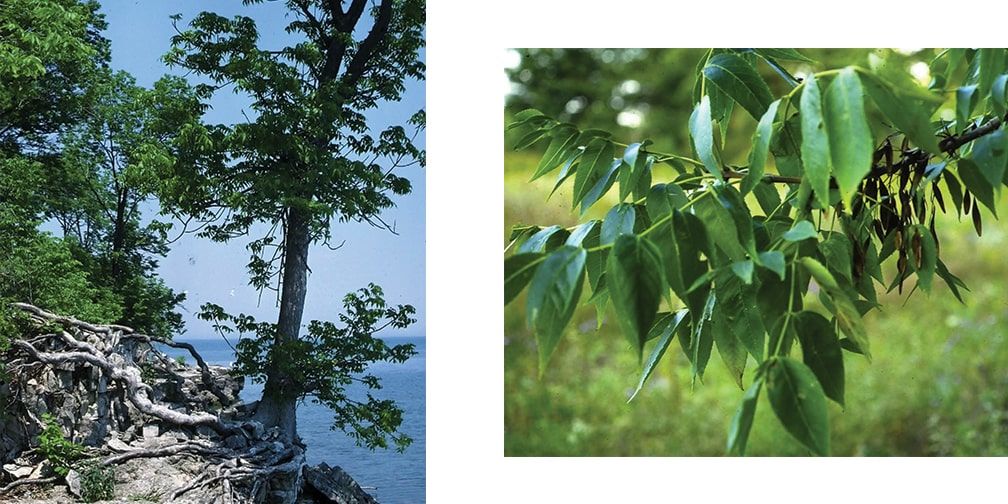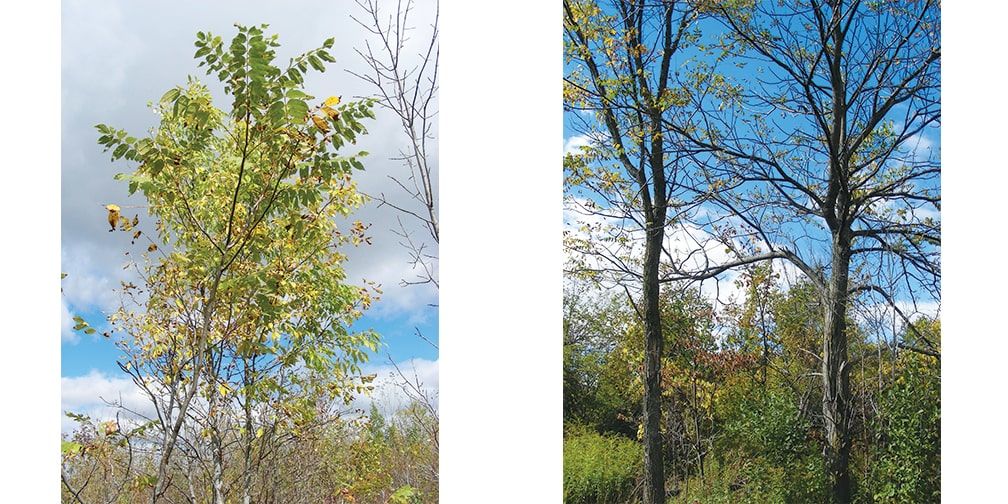Ontario Nature Blog
Receive email alerts about breaking conservation
and environmental news.
© Lora Denis
Oftentimes when we talk about species at risk, we think about mammals, birds or reptiles and we forget about the many plants that are at risk in our province.
That’s why we’re dedicating this week’s blog to learning more about plants at risk in Ontario.

Have you heard of the emerald ash borer? It’s an invasive beetle that’s having a devastating impact on ash trees across the country. This species is unique from other ashes due to its 4-sided twigs and loose, scaly bark. The blue ash is listed as threatened in Ontario due to several threats including the emerald ash borer and private landowners removing the species accidentally, not knowing that blue ash is a species at risk.
You can spot blue ash along the trails at our Stone Road Alvar Nature Reserve and check out the results of the prescribed burn that took place on our property in September, 2019. If you see a blue ash somewhere near you, report your sighting to the NHIC rare species of Ontario iNaturalist group.

Did you know that American ginseng doesn’t reproduce until it’s 7 to 10 years old? This means that the threats are exacerbated for this plant since they can’t recover as quickly as species that can reproduce after one or two years. This endangered species faces many threats including development, logging, poaching, climate change, deer browse and invasive species.
Keep an eye out for this plant if you have woodlands or forest on your property and try to maintain its original habitat.
Ginseng is relatively short (20-70cm) with one to four leaves. Each leaf consists of three to five leaflets. Mature plants produce small white flowers in the center of leaf clusters that turn into bright red berries during late summer.
You can help by reporting sightings of American ginseng to the NHIC rare species of Ontario iNaturalist group.

The butternut tree is a majestic species that can reach up to 30m tall and whose populations are being heavily impacted by a fungal disease called butternut canker. The disease enters the tree through wounds and leaf scars and can kill the tree within a few years. Butternut trees can be identified by the compound leaves (a leaf whose leaflets are attached to the middle vein but have their own stalks) with 1—17 leaflets; thick, tan coloured, fuzzy twigs, and diamond pattern ridges on mature bark.
Listed as endangered under the endangered species act, it faces many other threats including private landowners. They are often cut down by landowners without being properly identified or assessed. If you have a butternut on your property, contact the Forest Gene Conservation Association and visit their website for more information on butternut conservation.
You can help by reporting sightings of butternut to the NHIC rare species of Ontario iNaturalist group.

Alvars are globally rare ecosystems that are comprised of either a thin covering of soil or exposed limestone or dolostone bedrock. Alvars are home to many unique species including the lakeside daisy.
This bright yellow flowering species is listed as threatened in Ontario. It faces many threats including trampling, development, and invasive species. Invasive species such as dog strangling vine and spotted knapweed are becoming more prevalent in areas with lakeside daisy and are taking over their habitat. Since the lakeside daisy occurs in shallow soils on alvars, this makes them especially sensitive to trampling from hikers and other recreational activities. So keep your eye out for these beauties the next time you’re visiting an alvar!
Several of Ontario Nature’s nature reserves protect alvar ecosystems including Bruce Alvar Nature Reserve, where you can view hundreds of lakeside daisies from the boardwalks in the summer!
You can help by reporting sightings of lakeside daisy to the NHIC rare species of Ontario iNaturalist group.
Ontario Nature’s plant species at risk activities are possible in part due to funding from the Ontario Species at Risk Stewardship Fund


Gananoque Lake Nature Reserve © Smera Sukumar